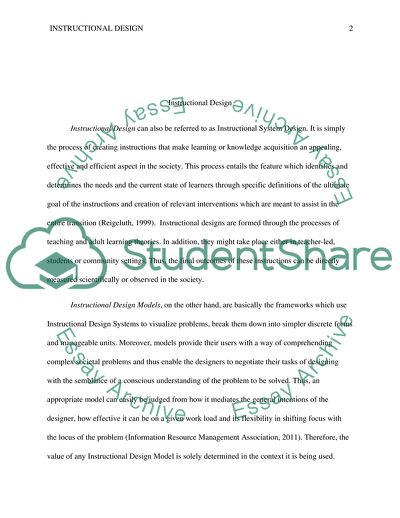Cite this document
(Instructional Design Models Assignment Example | Topics and Well Written Essays - 1250 words, n.d.)
Instructional Design Models Assignment Example | Topics and Well Written Essays - 1250 words. https://studentshare.org/education/1827304-instruction-designs
Instructional Design Models Assignment Example | Topics and Well Written Essays - 1250 words. https://studentshare.org/education/1827304-instruction-designs
(Instructional Design Models Assignment Example | Topics and Well Written Essays - 1250 Words)
Instructional Design Models Assignment Example | Topics and Well Written Essays - 1250 Words. https://studentshare.org/education/1827304-instruction-designs.
Instructional Design Models Assignment Example | Topics and Well Written Essays - 1250 Words. https://studentshare.org/education/1827304-instruction-designs.
“Instructional Design Models Assignment Example | Topics and Well Written Essays - 1250 Words”. https://studentshare.org/education/1827304-instruction-designs.


